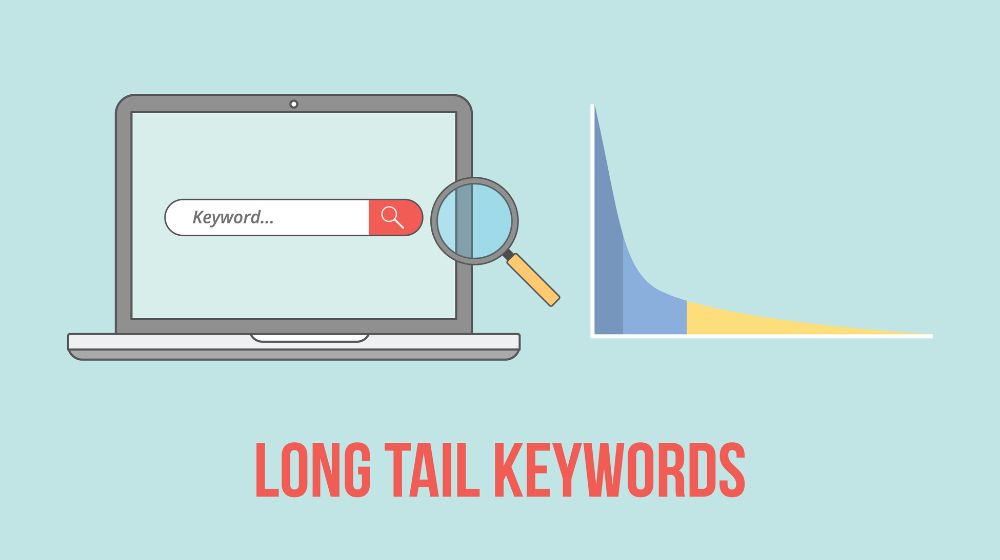What are long tail keywords? This blog post will discuss long-tail keywords and how you can use them to improve your SEO results.
Long tail keywords are a great way to target specific customers searching for exactly what you have to offer. They are also less competitive than shorter, more general keywords, so you have a better chance of ranking high on search engines. So, how do you find long-tail keywords that will work best for your business?
Related: How To Do Keyword Research for SEO: 2022 Keyword Research Best Practices
How to Find and Use Long Tail Keywords for SEO Success

What Are Long Tail Keywords
Longer, more specific keyword phrases are more likely to be used by visitors near a point of purchase or using voice search. As a result, long-tail keywords have a lower search volume than short or “head” keywords.
They’re counterintuitive initially, but they may be helpful if you know how to utilize them.
Longer, more specific keyword phrases are more likely to be used by visitors near a point of purchase or using voice search. As a result, long-tail keywords have a lower search volume than short or “head” keywords.
They’re counterintuitive initially, but they may be helpful if you know how to utilize them.
Long-tail keywords are an excellent SEO strategy. Long-tail keywords are more particular and, as a result, longer than traditional terms. Because they are more particular, long-tail keywords receive less traffic but tend to have a higher conversion value. They allow you to gradually increase the number of visitors to your website while still appealing to new and interested.
Managing long-tail keywords entails opening up better lines of communication between your company and the consumers who are already searching for what you have to offer.
Take a moment to consider it: what are the chances of you ending up at a sale if you Google the phrase “sofa”?
What is the likelihood of conversion (Conversion Rate) with a broad keyword? This broad keyword is called a “head term.”
If you search “elm wood veneer day-bed,” you precisely know what you’re looking for, and if you have the cash on hand, you’ll probably buy it then and there.
Although you’ll draw less traffic with a long-tail keyword than a more popular one, the traffic you get will be superior. Traffic generated by long-tail keywords is more focused, dedicated, and eager to use your services.
“Long tail” is a visual metaphor for a graph’s form.
If we constructed a graph of worldwide keyword popularity, some terms and phrases would receive enormous searches.
But here’s the perplexing bit: although these keyword search terms, the “head” of the dragon, account for a rather small proportion of all searches—around ten to fifteen percent. But, depending on how you calculate, they comprise the vast majority (about ninety-five percent) of organic traffic.
According to one estimate, long-tailed keywords account for around 15% of searches. That’s right: a whopping 77% of page views are the direct result of – yes, that’s right – long-tailed keywords. It’s a Chinese dragon with a lengthy tail: it just goes on and on.
With shorter keywords, competition for rankings can be fierce. As a result, visits can be scattershot, and ROI can be low.
You can pull in less traffic if you use long-tail keywords intelligently. If you go by numbers, you may have less traffic. Even so, the return on your investment will be considerably greater: you’ll be attracting the exact audience you want. That audience will be much closer to the purchase point than your lesser-savvy competitors.
You Might Also Like: Secondary Keywords | How to Find Secondary Keywords for SEO Success 2022
Lower competition keywords equal lower expenses.
Long-tail keywords are beneficial for businesses who want their piece of content to appear in organic Google searches. But they may be even more beneficial for advertisers running sponsored search marketing campaigns.
That’s because the cost per click is always lower when you bid on long-tailed keywords. After all, there is less competition. You can improve your ad rankings on relevant searches without paying a premium for every click by focusing your AdWords campaigns on longer, more detailed long-tail keywords.
The key is discovering a trustworthy, long-term source of long-tail keyword ideas appropriate for you and your field. Surprisingly, most keyword suggestion tools ignore this broad class, focusing only on the head and ignoring the rest of the dragon.




Comments